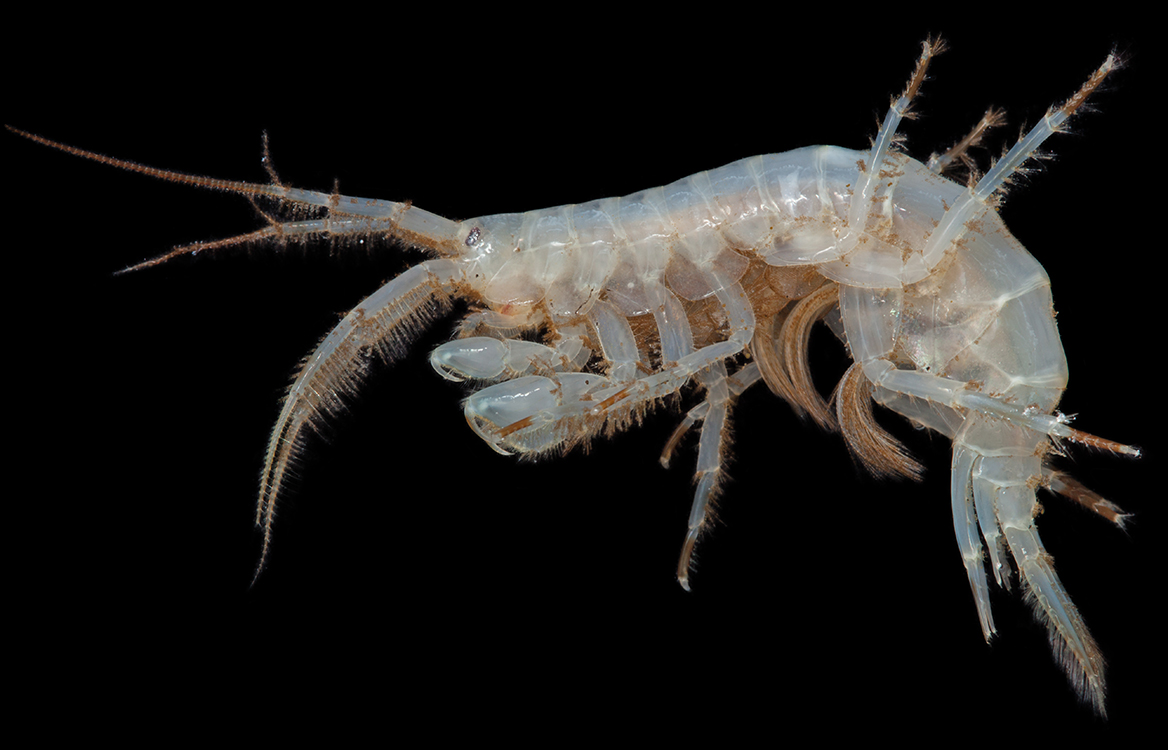
Researchers have discovered certain midwater species have developed a camouflaged layer to help avoid detection from predators. (Photo: Shutterstock)
Scientists have discovered midwater species may have a special camouflage layer to protect them from falling victim to predators.
A joint study from Duke University and the Smithsonian Institution has found that midwater hyperiid amphipods are covered with anti-reflective coatings on their legs and bodies that will dampen the reflection of light by 250-fold in some cases and prevent light from bouncing back to a predator’s eye.
When viewed under an electron microscope, the optical coating of these animals appears as a sheet of fairly uniform beads of what appears to be made of living bacteria, that are sometimes connected with a net of filaments like a biofilm.
“This coating of little spheres reduces reflections the same way putting a shag carpet on the walls of a recording studio would soften echoes,” study leader Laura Bagge, a Ph.D. candidate at Duke, said in a statement.
The spheres range from 50 to 300 nanometers in diameter, depending on the species of amphipod.
Bagge said the seven amphipod species that were examined appeared to have their own symbiotic optical bacteria, although that is not a sure thing and a further study is currently underway.
“They have all the features of bacteria but to be 100 percent sure, we’re going to have to perform an in-depth sequencing project,” Bagge added.
If the spheres are, in fact, made of bacteria, it is likely they are very small organisms.
Research zoologist Karen Osborn of the Smithsonian National Museum of Natural History said natural selection—having your host spotted and eaten—would drive the microbes to an optimal size.
Crustaceans molt to grow, meaning they shed their old shells and their new attendant may end up being anti-reflective bacteria. According to Osborn, it would be easy to re-seed the animal’s new shell.
“In that whole process, they’re touching the old carapace,” she said.
Support for this research came from the National Science Foundation (OCE-0852138), the Office of Naval Research (N00014-09-1-1053), Sigma Xi and the Rathbun Crustacean Research Endowment at Smithsonian National Museum of Natural History.




